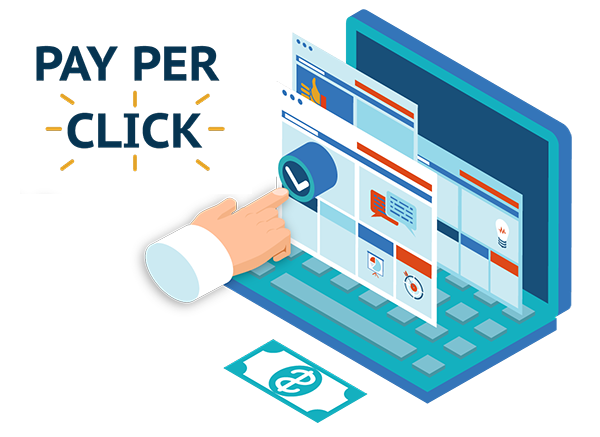The world of web development is constantly evolving, with new technologies and trends emerging every year. As we look ahead to 2025, several key trends are set to revolutionize the way we create websites. This comprehensive guide explores over 40 web development trends that will shape the future of web design and development, providing detailed insights to help you stay ahead of the curve.

1. Progressive Web Apps (PWAs)
Progressive Web Apps combine the best of web and mobile apps, offering fast loading times, offline capabilities, and a native app-like experience. PWAs are expected to become even more popular in 2025, providing a seamless user experience across all devices.
2. Artificial Intelligence and Machine Learning
AI and machine learning are transforming web development by enabling personalized user experiences, chatbots, and advanced data analytics. These technologies will continue to play a significant role in creating smarter and more responsive websites.
3. Voice Search Optimization
With the rise of voice-activated devices, optimizing websites for voice search is becoming increasingly important. This trend involves using natural language processing and conversational keywords to improve search engine rankings and user experience.
4. Motion UI
Motion UI involves using animations and transitions to enhance user engagement and create a more interactive experience. This trend will continue to grow in 2025, with more websites incorporating dynamic elements to capture users’ attention.
5. Single Page Applications (SPAs)
SPAs load a single HTML page and dynamically update content as the user interacts with the app. This approach offers faster loading times and a smoother user experience, making it a popular choice for modern web development.
6. Serverless Architecture
Serverless architecture allows developers to build and run applications without managing servers. This trend reduces infrastructure costs and simplifies deployment, enabling faster and more scalable web development.
7. Blockchain Technology
Blockchain technology is being integrated into web development to enhance security, transparency, and data integrity. This trend is particularly relevant for e-commerce, finance, and other industries that require secure transactions.
8. Internet of Things (IoT)
The IoT connects devices and systems, enabling them to communicate and share data. Web developers are increasingly incorporating IoT functionality into websites, creating more connected and interactive experiences.
9. Cybersecurity
As cyber threats continue to evolve, cybersecurity remains a top priority for web developers. Implementing robust security measures, such as SSL certificates, encryption, and multi-factor authentication, is essential for protecting user data and maintaining trust.
10. Augmented Reality (AR) and Virtual Reality (VR)
AR and VR technologies are transforming the way users interact with websites. These immersive experiences are being used in various industries, from retail to real estate, to provide more engaging and interactive content.
11. Responsive Design
Responsive design ensures that websites look and function well on all devices, from desktops to smartphones. This trend will continue to be crucial in 2025, as mobile usage continues to rise.
12. Micro Frontends
Micro frontends involve breaking down a web application into smaller, independent components that can be developed and deployed separately. This approach improves scalability and allows for more flexible and efficient development.
13. WebAssembly
WebAssembly is a binary instruction format that enables high-performance web applications. This technology allows developers to run code written in multiple languages on the web, providing faster and more efficient performance.
14. Content Management Systems (CMS)
Modern CMS platforms are becoming more flexible and user-friendly, enabling developers to create and manage content more efficiently. Headless CMS, which decouples the backend from the frontend, is also gaining popularity.
15. API-First Development
API-first development involves designing and building APIs before developing the frontend. This approach ensures that APIs are well-documented and easy to integrate, improving the overall development process.
16. Static Site Generators
Static site generators create fast, secure, and scalable websites by generating static HTML files. This trend is gaining traction as developers seek to improve performance and reduce server load.
17. JAMstack
JAMstack (JavaScript, APIs, and Markup) is a modern web development architecture that emphasizes performance, security, and scalability. This approach is becoming increasingly popular for building fast and reliable websites.
18. Cloud Computing
Cloud computing enables developers to access and manage resources on-demand, reducing infrastructure costs and improving scalability. This trend will continue to shape web development in 2025, with more businesses adopting cloud-based solutions.
19. Edge Computing
Edge computing involves processing data closer to the source, reducing latency and improving performance. This trend is particularly relevant for IoT applications and real-time data processing.
20. Low-Code and No-Code Development
Low-code and no-code platforms enable developers to create applications with minimal coding, reducing development time and costs. These platforms are becoming more sophisticated, allowing for the creation of complex and scalable web applications.
21. Design Systems
Design systems provide a set of guidelines and components for creating consistent and cohesive user interfaces. This trend helps streamline the design process and ensures a unified look and feel across all digital products.
22. Dark Mode
Dark mode is a popular design trend that reduces eye strain and improves battery life on mobile devices. More websites are offering dark mode options, allowing users to switch between light and dark themes.
23. Accessibility
Ensuring that websites are accessible to all users, including those with disabilities, is a critical aspect of modern web development. Implementing accessibility best practices, such as using semantic HTML and providing alternative text for images, is essential for creating inclusive experiences.
24. Progressive Enhancement
Progressive enhancement involves building websites that work on all browsers and devices, while providing enhanced functionality for those with more advanced capabilities. This approach ensures a consistent user experience across different platforms.
25. Web Components
Web components are reusable custom elements that can be used across different web applications. This trend promotes modularity and code reusability, making development more efficient and scalable.
26. Real-Time Web Apps
Real-time web apps provide instant updates and interactions, creating a more dynamic user experience. Technologies like WebSockets and server-sent events enable real-time communication between the client and server.
27. Headless Commerce
Headless commerce decouples the frontend and backend of e-commerce platforms, allowing for more flexibility and customization. This trend enables businesses to create unique shopping experiences and integrate with various third-party services.
28. Personalization
Personalization involves tailoring content and experiences to individual users based on their preferences and behavior. This trend enhances user engagement and satisfaction, driving better results for businesses.
29. Microservices
Microservices architecture involves breaking down applications into smaller, independent services that can be developed and deployed separately. This approach improves scalability and allows for more flexible and efficient development.
30. GraphQL
GraphQL is a query language for APIs that allows clients to request specific data, reducing over-fetching and under-fetching of information. This trend is gaining popularity as developers seek more efficient ways to interact with APIs.
31. DevOps
DevOps practices involve integrating development and operations teams to improve collaboration and streamline the development process. This trend promotes continuous integration and delivery, enabling faster and more reliable releases.
32. Containerization
Containerization involves packaging applications and their dependencies into containers, ensuring consistency across different environments. This trend improves scalability and simplifies deployment, making it easier to manage complex applications.
33. Continuous Integration and Continuous Deployment (CI/CD)
CI/CD practices involve automating the process of integrating and deploying code changes, reducing the risk of errors and improving the speed of releases. This trend is essential for maintaining a fast and efficient development workflow.
34. Automated Testing
Automated testing involves using tools and scripts to test applications, reducing the need for manual testing and improving the accuracy of results. This trend ensures that applications are thoroughly tested and free of bugs before deployment.
35. Static Site Generators
Static site generators create fast, secure, and scalable websites by generating static HTML files. This trend is gaining traction as developers seek to improve performance and reduce server load.
36. JAMstack
JAMstack (JavaScript, APIs, and Markup) is a modern web development architecture that emphasizes performance, security, and scalability. This approach is becoming increasingly popular for building fast and reliable websites.
37. Cloud Computing
Cloud computing enables developers to access and manage resources on-demand, reducing infrastructure costs and improving scalability. This trend will continue to shape web development in 2025, with more businesses adopting cloud-based solutions.
38. Edge Computing
Edge computing involves processing data closer to the source, reducing latency and improving performance. This trend is particularly relevant for IoT applications and real-time data processing.
39. Low-Code and No-Code Development
Low-code and no-code platforms enable developers to create applications with minimal coding, reducing development time and costs. These platforms are becoming more sophisticated, allowing for the creation of complex and scalable web applications.
40. Design Systems
Design systems provide a set of guidelines and components for creating consistent and cohesive user interfaces. This trend helps streamline the design process and ensures a unified look and feel across all digital products.
Conclusion
The web development landscape in 2025 will be defined by advancements in technology and innovative approaches to design and development. By staying informed about these trends, you can better prepare for the future and leverage the latest tools and techniques to create cutting-edge websites. Embrace these trends to stay ahead in the rapidly evolving world of web development.



